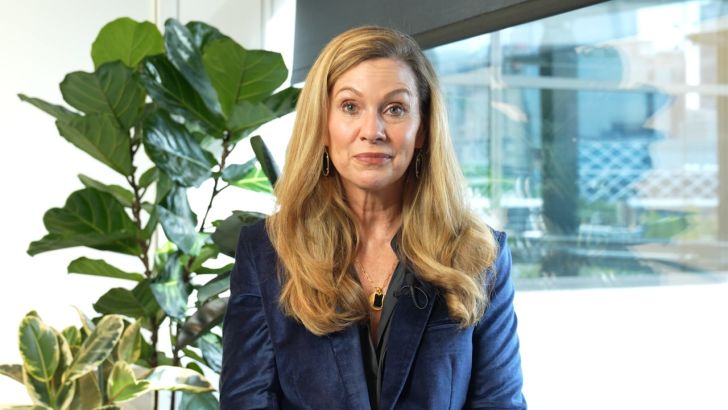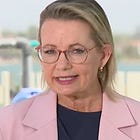Australian Universities Hit Record Enrollment as Sector Faces 3,000 Job Losses
This piece is freely available to read. Become a paid subscriber today and help keep Mencari News financially afloat so that we can continue to pay our writers for their insight and expertise.
Today’s Article is brought to you by Empower your podcasting vision with a suite of creative solutions at your fingertips.

Australian universities will enroll a record number of students in 2026 after the government allocated 9,000 additional domestic places, but the expansion comes amid widespread job cuts that union leaders warn could undermine education quality.
Education Minister Jason Clare announced the 4% enrollment increase Thursday at Western Sydney University’s Fairfield hub, where the Albanese government is investing $3.2 million to expand services for students in outer suburban areas. The new places will push total university enrollment to unprecedented levels, Clare said, as part of a national effort to raise tertiary qualification rates from 60% to 80% by 2050.
But the celebration was tempered by stark warnings from the National Tertiary Education Union, which reported more than 3,000 job losses across Australia’s public universities, particularly concentrated in New South Wales. The cuts are happening simultaneously with the enrollment surge, creating what union President Alison Barnes called a “wicked storm” of declining resources and rising student numbers.
“While students are paying more for their degrees, that funding isn’t leading to increased funding for universities,” Barnes said in a broadcast interview Thursday. “We’re constantly asking staff to do more with less, and that’s really coming at a cost to staff and eventually at a cost to students.”
Truth matters. Quality journalism costs.
Your subscription to Mencari directly funds the investigative reporting our democracy needs. For less than a coffee per week, you enable our journalists to uncover stories that powerful interests would rather keep hidden. There is no corporate influence involved. No compromises. Just honest journalism when we need it most.
Not ready to be paid subscribe, but appreciate the newsletter ? Grab us a beer or snag the exclusive ad spot at the top of next week's newsletter.
Clare, who represents the western Sydney electorate of Blaxland, framed the enrollment expansion as breaking down barriers for students from disadvantaged areas. He noted that while nearly 50% of Australians in their 20s and 30s hold university degrees nationally, that figure drops to just 25% in western Sydney suburbs like Fairfield, Liverpool and Blacktown.
“University felt like it was too far away, that it was somewhere else for someone else,” Clare said, describing his own three-hour daily commute to the University of New South Wales as a student. “That’s why hubs like this are so important, breaking down that invisible barrier.”
The Universities Accord, which guides the government’s tertiary education strategy, projects that 80% of the workforce will need certificates, diplomas or degrees by 2050, up from the current 60%. Meeting that target requires bringing more students from underrepresented communities into higher education, Clare said.
The Fairfield hub, located on Smart Street in Sydney’s west, hosted 100 students last night preparing for their physics exam, the final test of the New South Wales Higher School Certificate. The facility is one of five Western Sydney University community hubs now operating in Mount Druitt, Edmonton, Macquarie Fields, Fairfield and Liverpool.
University enrollments have grown 4% annually for the past two years, driven by work from the Australian Tertiary Education Commission. Next year’s projected increase of 9,000 students will bring total enrollment to record levels, according to government data.
But Barnes warned that universities cannot sustain the expansion without addressing structural funding problems stemming from the previous government’s Job Ready Graduates legislation. The union is calling for repeal of that policy and increased per-student funding to prevent further deterioration of education quality.
“Staff across our universities will work enormously hard to ensure that students have a great experience,” Barnes said. “However, that is becoming increasingly difficult. We’re seeing a crisis emerging across our universities where staff are really suffering from the increases in what’s expected of them.”
The job losses have been particularly severe at the University of Technology Sydney and Australian National University, she said. Rising workloads are contributing to staff mental health concerns as universities attempt to serve more students with fewer educators and support staff.
Clare also addressed international student policy, defending the government’s decision to set a “national planning level” of 295,000 international student commencements for next year rather than imposing hard caps. He emphasized that educating domestic students remains universities’ top priority, but acknowledged international education’s economic and diplomatic value.
“It makes us money as a country. It makes us friends as a country as well,” Clare said.
The enrollment expansion reflects broader demographic and economic pressures driving Australians toward tertiary education. The Universities Accord projects accelerating demand for skilled workers across industries, making higher education access increasingly critical for economic participation.
For students in western Sydney, the hub model represents a departure from decades of limited higher education visibility in outer suburban communities. Clare noted the proliferation of fast-food and retail logos in these areas during his childhood, contrasting with the near-absence of university branding.
“There weren’t a lot of university logos telling young people in our area that university was for them,” he said. “That’s what this is about.”
The tension between enrollment growth and resource constraints will likely intensify as the government pursues its 2050 qualification target. Barnes called for urgent policy changes to ensure universities can meet expanded access commitments without compromising education quality or staff wellbeing.
“It’s fantastic to have as many Australians and as much of the workforce as possible attending university,” Barnes said. “But if we want that goal, we need to fund the sector properly.”
Sustaining Mencari Requires Your Support
Independent journalism costs money. Help us continue delivering in-depth investigations and unfiltered commentary on the world's real stories. Your financial contribution enables thorough investigative work and thoughtful analysis, all supported by a dedicated community committed to accuracy and transparency.
Subscribe today to unlock our full archive of investigative reporting and fearless analysis. Subscribing to independent media outlets represents more than just information consumption—it embodies a commitment to factual reporting.
As well as knowing you’re keeping Mencari (Australia) alive, you’ll also get:
Get breaking news AS IT HAPPENS - Gain instant access to our real-time coverage and analysis when major stories break, keeping you ahead of the curve
Unlock our COMPLETE content library - Enjoy unlimited access to every newsletter, podcast episode, and exclusive archive—all seamlessly available in your favorite podcast apps.
Join the conversation that matters - Be part of our vibrant community with full commenting privileges on all content, directly supporting The Evening Post (Australia)
Catch up on some of Mencari’s recent stories:
It only takes a minute to help us investigate fearlessly and expose lies and wrongdoing to hold power accountable. Thanks!







